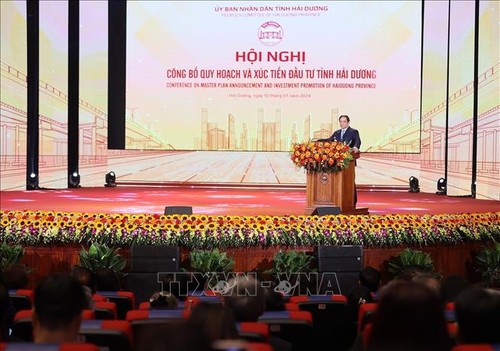 Prime Minister Pham Minh Chinh addresses the conference announcing Hai Duong province's master plan for the 2021-2030 period with a vision to 2050, January 10, 2024. (Photo: VNA) Prime Minister Pham Minh Chinh addresses the conference announcing Hai Duong province's master plan for the 2021-2030 period with a vision to 2050, January 10, 2024. (Photo: VNA) |
Addressing a conference to announce the planning and investment promotion of Hai Duong province, in Hai Duong city on Wednesday, the Prime Minister said that by 2050, Hai Duong should meet the criteria of a centrally run city: modern, green, smart, secure, safe, and sustainable city with in-depth international integration and cultural identity richness.
Hai Duong province has outstanding potentials, opportunities, and competitive advantages for rapid and sustainable socio-economic development, and is an attractive destination for domestic and international investors, he said.
To achieve that goal, the Prime Minister requested the province to quickly and effectively implement the provincial planning, create breakthroughs in strategic management; economic restructuring; infrastructure investment; administrative reform; and comprehensive development of cultural and social fields.
Prime Minister Chinh stressed the need to have a long-term, sustainable business strategy to properly deliver investment commitments and business culture in the spirit of "harmonious benefits and shared risks".
At the conference, Hai Duong leaders outlined local potentials and advantages, and announced priority projects to lure investment. Luu Van Ban, Vice Chairman of the People's Committee of Hai Duong province said that in the past year Hai Duong ranked 11 out of 63 provinces in terms of economic size. Its Foreign Direct Investment (FDI) totaled 1.1 billion USD, 3 times more than in 2022, while domestic investment reached 480 million USD, 5.6 times more than in the previous year.